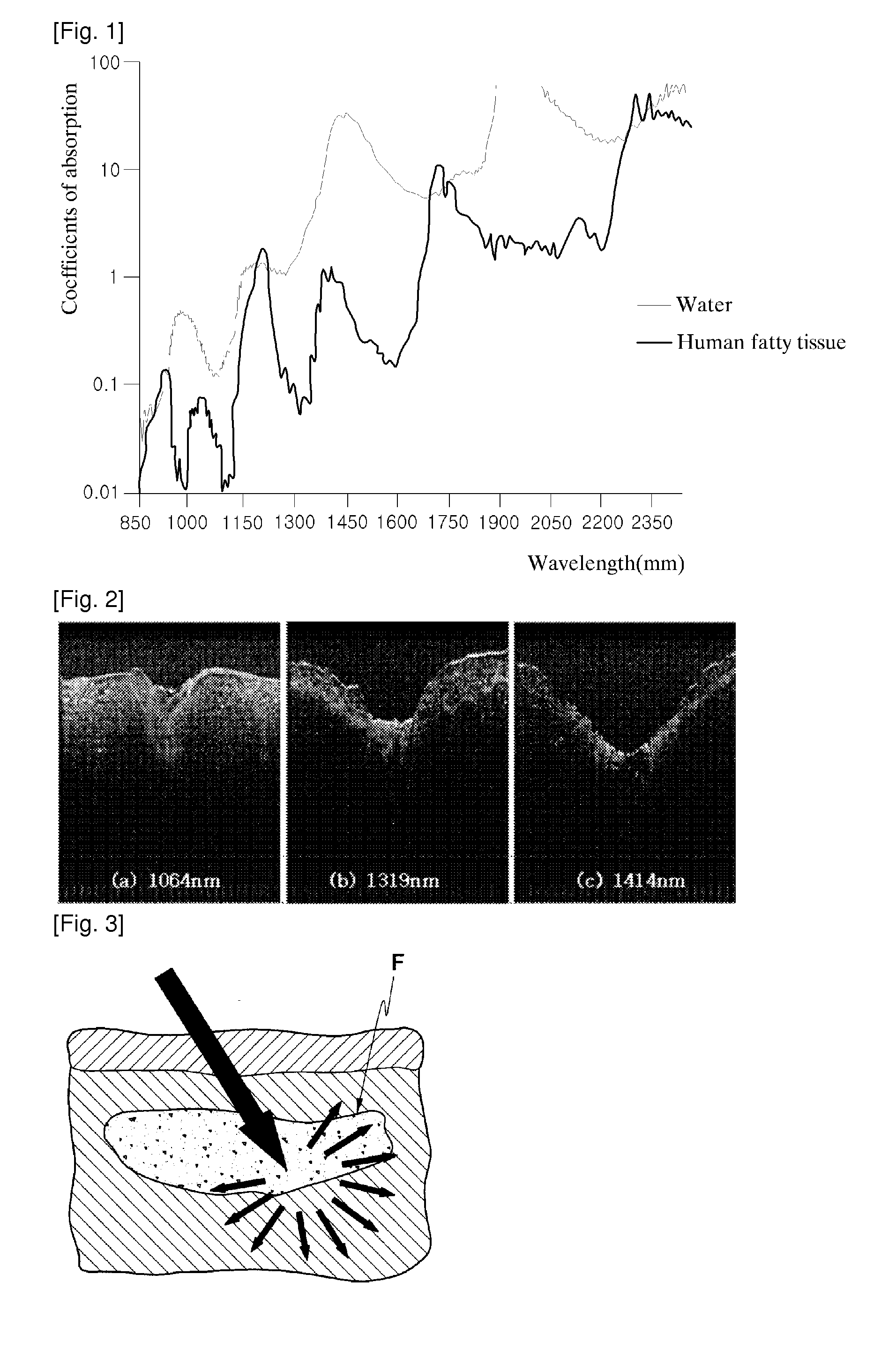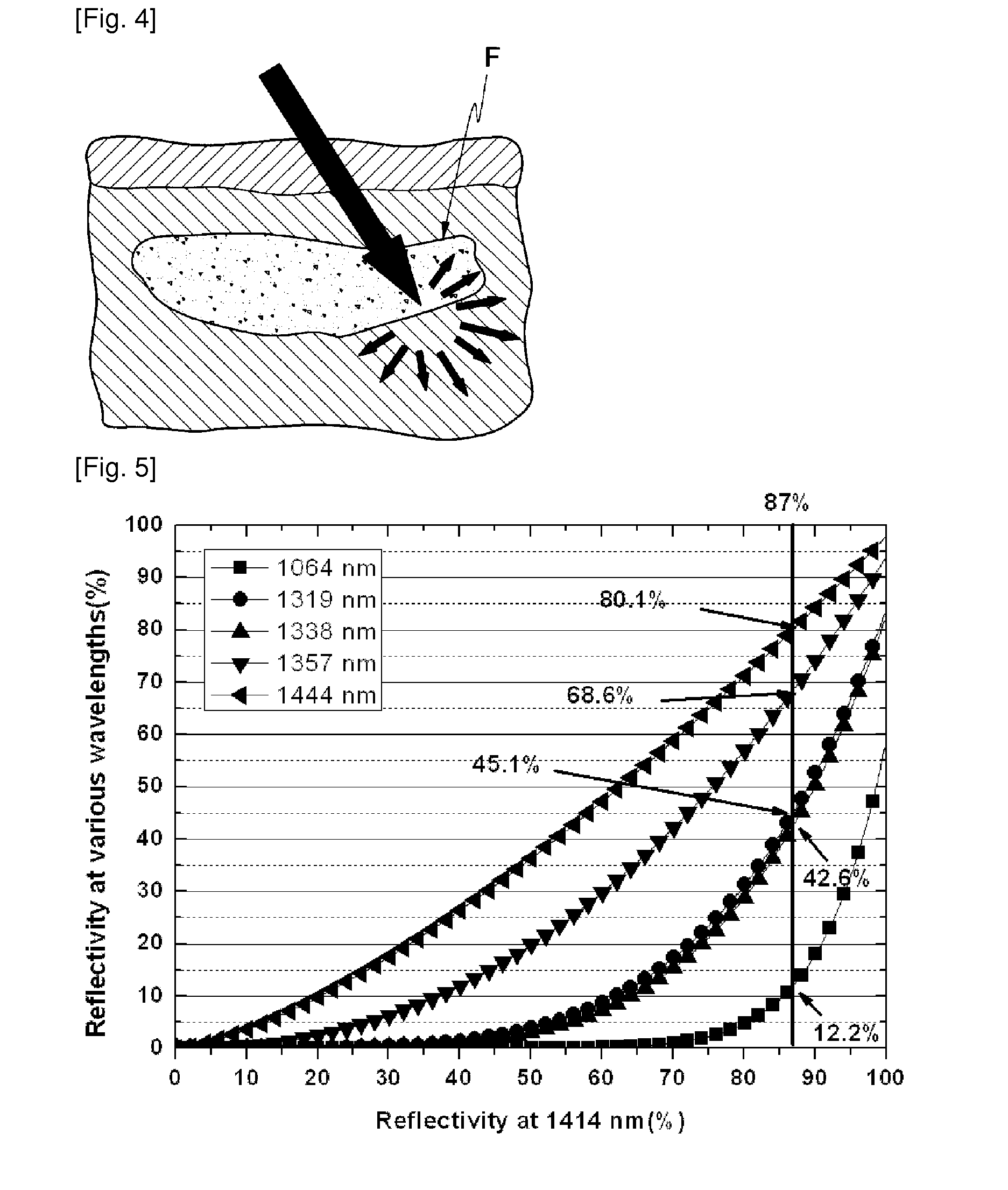Nd:yag laser apparatus
a laser and laser technology, applied in the field of yag laser equipment, can solve the problems of ineffective removal of fat, damage to human tissues by using these wavelengths, and achieve the effect of reducing damage to adjacent tissues, reducing damage, and reducing the absorption coefficient of fa
- Summary
- Abstract
- Description
- Claims
- Application Information
AI Technical Summary
Benefits of technology
Problems solved by technology
Method used
Image
Examples
Embodiment Construction
[0039]A preferred embodiment of a fat removal 1414 nm Nd:YAG laser apparatus for direct irradiation into fat according to the present invention will be described in detail below with reference to the accompanying drawings.
[0040]First, a method of obtaining a 1414 nm laser beam will be schematically described below with reference to the following publications.[0041][1] Hee Chul Lee, “Simultaneous dual-wavelength oscillation at 1357 nm and 1444 nm in a Kr-flashlamp pumped Nd:YAG laser”, Opt Comm. Vol. 281 2008 pp. 4455˜4458.[0042][2] Richard C. Powell, Physics of solid-state laser materials, Springer-Verlag, 1998, Chap. 8.[0043][3] W. Koechner, Solid-State Laser Engineering, Springer-Verlag, 1999, pp. 48.
[0044]Since the 1414 nm and 1444 nm wavelengths have smaller stimulated emission cross sections than the 1064 nm or 1319 nm wavelength, it is very difficult to obtain them. Hitherto it has been known that the stimulated emission cross section and branching ratio of the 1444 nm wavelen...
PUM
 Login to View More
Login to View More Abstract
Description
Claims
Application Information
 Login to View More
Login to View More - R&D
- Intellectual Property
- Life Sciences
- Materials
- Tech Scout
- Unparalleled Data Quality
- Higher Quality Content
- 60% Fewer Hallucinations
Browse by: Latest US Patents, China's latest patents, Technical Efficacy Thesaurus, Application Domain, Technology Topic, Popular Technical Reports.
© 2025 PatSnap. All rights reserved.Legal|Privacy policy|Modern Slavery Act Transparency Statement|Sitemap|About US| Contact US: help@patsnap.com



